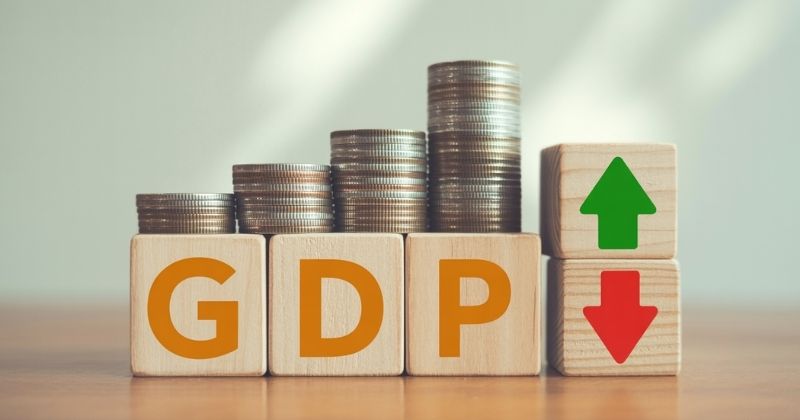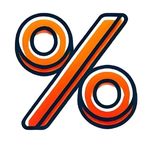
Gross Domestic Product (GDP) is a core measure used to assess the economic performance of a country, including South Africa. It reflects the total value of all goods and services produced within the country over a specific period, usually quarterly or annually. GDP serves as a key indicator of national economic activity, helping policymakers, investors, and analysts evaluate growth, productivity, and overall financial health. In South Africa, understanding GDP provides insight into the country’s economic structure, sector contributions, and trends that influence employment, investment, and fiscal decisions.
Key Takeaways
- GDP Measures Economic Output: Gross Domestic Product (GDP) calculates the total value of goods and services produced in South Africa over a specific period and is used to assess economic performance and trends.
- Real vs Nominal GDP: Real GDP adjusts for inflation and gives a more accurate picture of economic growth, while Nominal GDP reflects current market prices without inflation adjustment.
- GDP Affects Everyday Life: Changes in GDP influence employment levels, inflation, household income, and government budgeting, making it a relevant indicator for South African citizens.
About Arcadia Finance
Arcadia Finance makes borrowing simple. You pay no application fees and get access to 19 trusted lenders approved by the National Credit Regulator. The process is quick and stress-free.
What Is Gross Domestic Product (GDP)?
Gross Domestic Product (GDP) refers to the total monetary value of all goods and services produced within a country’s borders over a specified period. This figure includes consumer spending, government expenditure, investment activities, and the net value of exports (exports minus imports). It serves as a broad indicator of a country’s overall economic output. Economists may adjust GDP figures to account for inflation and changes in population size, which helps in understanding changes in economic performance more accurately. Real GDP reflects figures that are inflation-adjusted, providing a clearer picture of growth over time, whereas Nominal GDP measures output using current prices and does not adjust for inflation.

How GDP Works
The process of determining GDP involves summing all forms of domestic consumption, including both private and public sector spending, government disbursements, gross fixed capital formation (investment in infrastructure, machinery, etc.), changes in inventories held by businesses, and construction expenditure. Another major component is the foreign trade balance, which is calculated by subtracting the value of imports from the value of exports.
Among all components, the trade balance plays a significant role in shaping a country’s GDP. When exports exceed imports, the country runs a trade surplus, which usually supports an increase in GDP. This reflects stronger demand for domestically produced goods and services from international markets.
Conversely, if imports surpass exports, the country experiences a trade deficit. In such a case, GDP is likely to decline since more capital is flowing out of the country to pay for foreign goods and services than is coming in through the sale of domestic products abroad. This situation can weaken overall economic performance and put pressure on local industries.
Currency performance plays a crucial role in trade balance and GDP. A stronger rand makes imports cheaper but exports less competitive. Learn more about the history of the South African rand to understand its economic relevance and influence on national production.
Nominal GDP vs. Real GDP
The total value of goods and services produced in a country, known as Gross Domestic Product (GDP), can be influenced by various factors, most notably changes in price levels due to inflation. To assess whether variations in GDP figures are caused by actual changes in production or simply by rising prices, two distinct measures are applied:
Nominal GDP refers to the total value of goods and services at current market prices, meaning it reflects the prices at the time of measurement and does not adjust for inflation or deflation.
Real GDP, on the other hand, takes nominal GDP and adjusts it to account for inflation. This measure gives a clearer picture of whether economic output is truly increasing or simply appearing to do so due to rising prices.
Real GDP = (Nominal GDP) / (GDP Deflator)
The calculation of real GDP involves adjusting the nominal GDP figure using a reference index called the GDP Deflator. This deflator helps to remove the effects of inflation by comparing the current year’s nominal GDP to that of a base year. It represents the ratio between the nominal and real GDP figures for the base year.
GDP Deflator = [(Nominal GDP of Base Year) / (Real GDP of Base Year)] x 100
Once the GDP Deflator is determined, it can be applied to the current year’s nominal GDP to produce a more accurate reflection of economic performance, adjusted for inflation. This allows analysts to measure how much of the growth in GDP is due to real increases in output rather than price increases.
Real GDP is commonly used for comparing economic growth between different years, as it accounts for inflation and provides a consistent basis for analysis. In contrast, when comparing economic performance across different quarters within the same year, nominal GDP is often used, since price levels tend to remain relatively stable over such short periods.
South Africa’s GDP is shaped by a diverse range of industries, from manufacturing to entertainment. One unexpected contributor is gambling. Explore how much South Africa’s betting industry is worth and how it factors into the broader economic picture.

National GDP vs GDP per Capita
National GDP represents the total value of goods and services produced by a country within a given time period. It provides a broad overview of a nation’s economic activity. However, this figure alone does not reflect how that economic output affects the daily lives of individuals within the country. To assess that, the GDP per capita must be considered.
GDP per capita calculates the average economic output attributed to each person in the population. It is derived by dividing the national GDP by the total population. This figure gives a general idea of the average income or standard of living for a citizen. When calculated on an annual basis, it shows the estimated yearly contribution of the economy per person. A quarterly figure, on the other hand, provides the same information for that specific three-month period.
Although a country might report a high total GDP, it does not necessarily mean that its citizens are well-off. If the population is significantly large, the share of GDP per person could be quite low, indicating that the overall standard of living remains modest despite strong national output.
South Africa’s Current GDP Overview
| Category | Details |
|---|---|
| Nominal GDP (ZAR) | South Africa’s nominal GDP is estimated at R7.6 trillion, showing an increase from R7.3 trillion in 2024. |
| Nominal GDP (USD) | The GDP in US dollar terms is approximately $384 billion, keeping South Africa as the largest economy in Africa. |
| Real GDP Growth (Annual) | Real GDP is projected to grow by 1.4 percent in 2025, up from 0.6 percent in 2024, indicating a moderate recovery. |
| Nominal GDP per Capita (USD) | GDP per capita is estimated at $6,102, slightly higher than the $6,082 recorded in 2024. |
| GDP per Capita (PPP) | When adjusted for purchasing power parity, GDP per capita is approximately $15,989, reflecting real living standards. |
| Main Growth Sector | The finance, real estate, and business services sector continues to lead in economic contribution. |
| Key Supporting Sectors | Other important sectors include agriculture, trade, manufacturing, personal services, and general government services. |
| Sector Highlight: Agriculture | In the fourth quarter of 2024, agriculture grew by 17.2 percent, significantly boosting overall GDP. |
| Quarterly GDP (Q4 2024) | GDP grew by 0.6 percent in the fourth quarter of 2024, recovering from a contraction in the previous quarter. |
| Quarterly GDP (Q3 2024) | The economy contracted by 0.1 percent in the third quarter of 2024 due to declines in key sectors. |
| Economic Outlook for 2025 | Growth is expected to remain modest, supported by stable service sectors and improved agricultural performance. |
Access official GDP data and economic indicators directly from Statistics South Africa, the country’s primary source of national statistics.

Why GDP Matters for South Africans
Gross Domestic Product (GDP) is more than just an economic metric; it has direct implications for the everyday lives of South Africans. Understanding how GDP influences employment, inflation, household income, and government policies can provide insight into the nation’s economic health and individual well-being.

Employment Opportunities
Economic growth, as measured by GDP, is closely linked to job creation. When the economy expands, businesses often experience increased demand for their products and services, leading them to hire more employees. Conversely, a stagnant or contracting GDP can result in job losses and higher unemployment rates. In South Africa, the unemployment rate stood at 32.4% in 2023, with youth unemployment exceeding 40% . These figures underscore the importance of sustained economic growth in generating employment opportunities.

Inflation and Interest Rates
GDP growth can influence inflation and interest rates. When the economy grows rapidly, increased demand can lead to higher prices, prompting the South African Reserve Bank (SARB) to adjust interest rates to control inflation. For instance, in 2023, South Africa’s inflation rate averaged 5.9%, leading to higher interest rates to curb spending . These adjustments affect the cost of borrowing, impacting consumers with loans and mortgages.

Household Income and Cost of Living
A growing GDP often correlates with higher household incomes, as businesses perform better and can offer increased wages. However, if GDP growth is accompanied by high inflation, the cost of living can outpace income growth, reducing purchasing power. In 2023, the average annual household income in South Africa was reported at R204,359, with significant disparities between different demographics . Understanding GDP trends helps households anticipate changes in their economic circumstances.

Government Policy and Budget Decisions
GDP influences government revenue through taxation. Higher GDP typically leads to increased tax collections, enabling the government to fund public services and infrastructure projects. Conversely, lower GDP can result in budget deficits, necessitating spending cuts or increased borrowing. In 2025, South Africa faced a significant budget shortfall, prompting considerations for spending reductions and utilisation of reserve funds . These fiscal decisions directly affect public services and economic stability.
Conclusion
Gross Domestic Product (GDP) remains one of the most useful tools for understanding the performance of South Africa’s economy. It reflects the overall value of goods and services produced within the country and helps assess how different sectors are performing over time. By examining both real and nominal GDP figures, it becomes possible to separate actual growth from changes caused by inflation. For individuals, businesses, and policymakers, GDP trends offer guidance on economic planning, financial decision-making, and the likely direction of employment, income levels, and government spending.
Frequently Asked Questions
GDP stands for Gross Domestic Product. It measures the total value, in monetary terms, of all goods and services produced within a country’s borders over a given time period. This includes consumer spending, government expenditure, investment, and net exports.
Real GDP is adjusted for inflation, allowing for a more accurate comparison of economic performance over time. Nominal GDP, on the other hand, is calculated using current prices and does not account for inflation, which can distort the true rate of economic growth.
South Africa’s GDP is published quarterly by Statistics South Africa (Stats SA), with detailed breakdowns provided for different sectors. An annual summary is also released to give a broader view of the country’s economic performance over the year.
Key sectors that contribute significantly to South Africa’s GDP include finance, real estate, business services, trade, manufacturing, agriculture, and government services. In recent years, the finance and real estate sector has shown consistent growth and remains a leading contributor.
GDP trends can influence several aspects of daily life, such as job opportunities, inflation, interest rates, and government budget decisions. A growing GDP usually signals a healthier economy with better job prospects, while a shrinking GDP can lead to rising unemployment and pressure on public services.
Fast, uncomplicated, and trustworthy loan comparisons
At Arcadia Finance, you can compare loan offers from multiple lenders with no obligation and free of charge. Get a clear overview of your options and choose the best deal for you.
Fill out our form today to easily compare interest rates from 19 banks and find the right loan for you.


